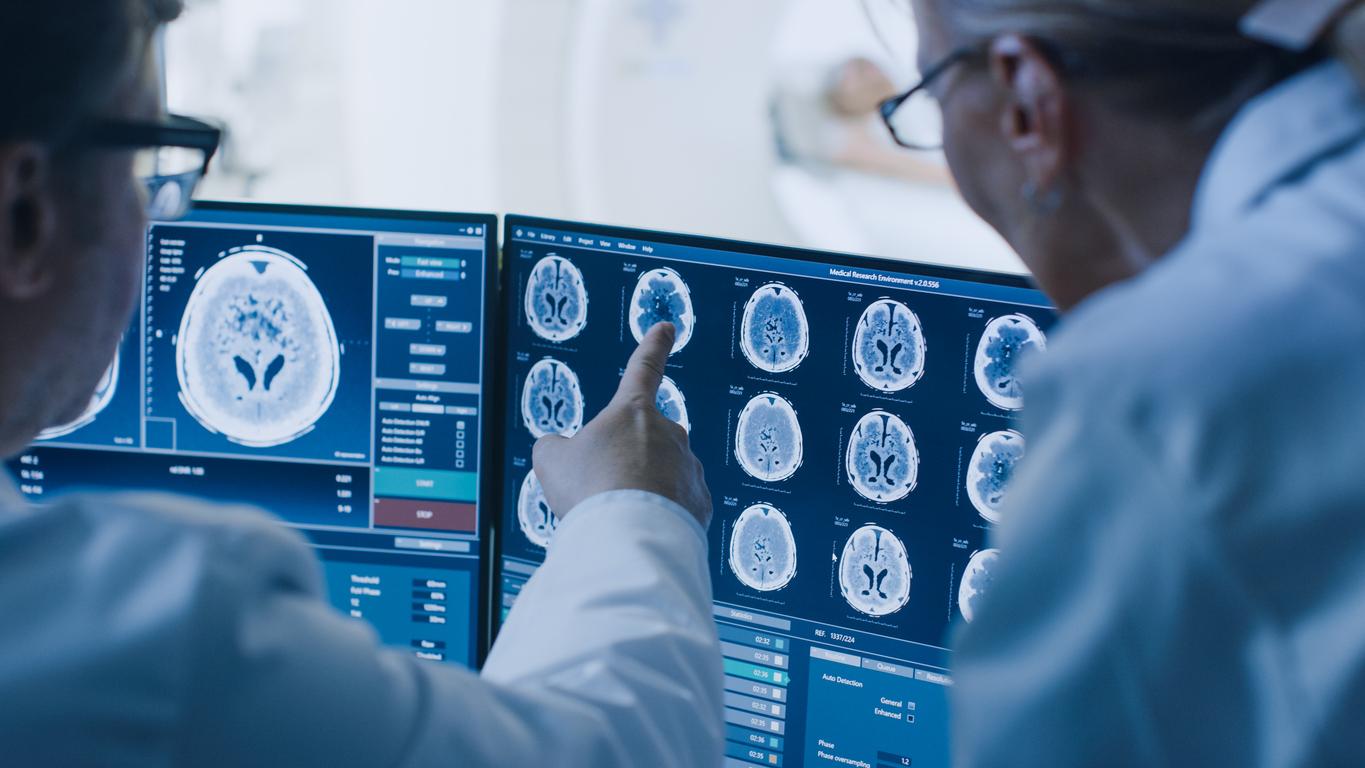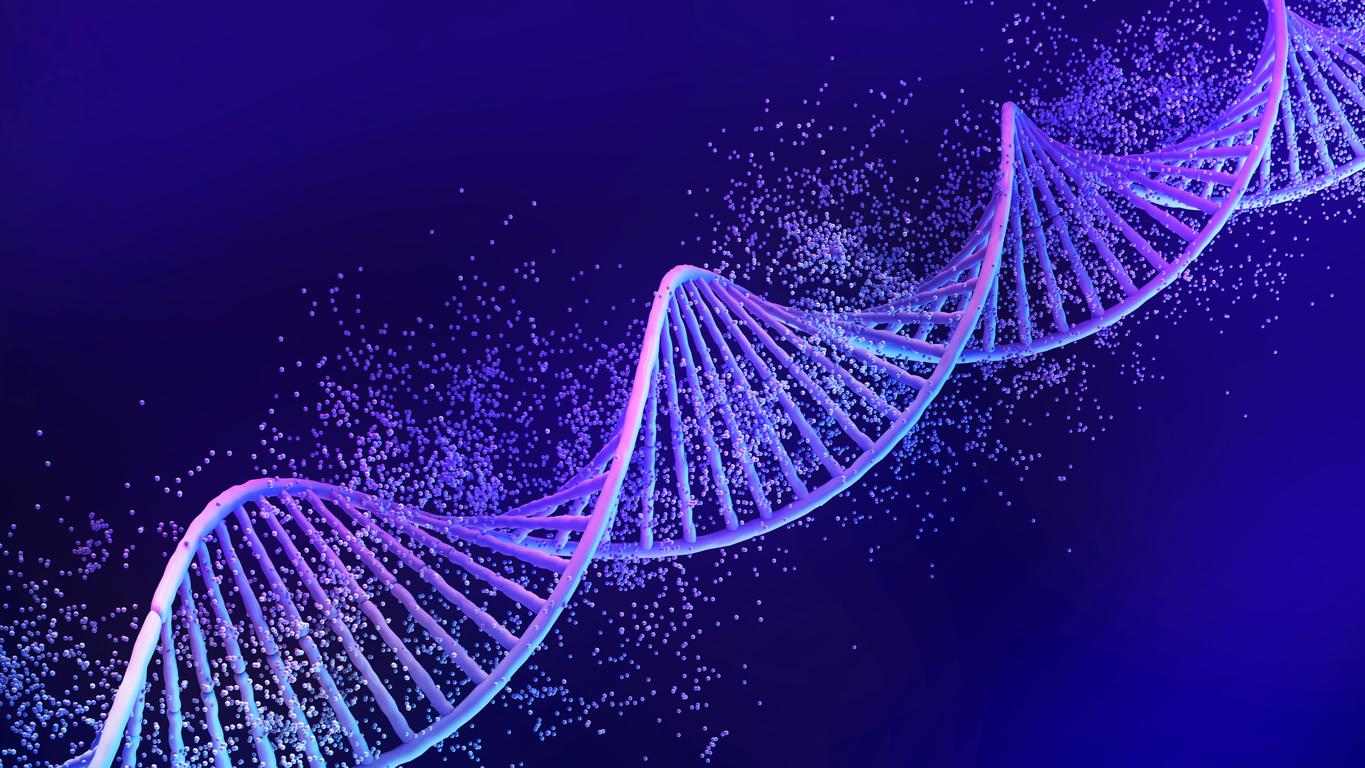We know little about it, and yet: beta-thalassemia is one of the most common genetic diseases in the world, “even more common than cystic fibrosis“says Pr. Frédéric Galacteros, specialist in medical genetics.
Each year, 100,000 babies are born with this pathology; in France, beta-thalassemia remains rare with about 350 patients suffering from a severe form of the disease.
Beta-thalassemia: what is it exactly?
A short lesson in express medicine. The red blood cells that circulate in our body contain hemoglobin, a molecule whose role is absolutely crucial since it is what carries the oxygen necessary for the functioning of the various organs – the heart, the lungs, the brain… “Hemoglobin is a molecule that consists of two parts: the alpha part and the beta part.“says Prof. Galacteros.
In patients who suffer from beta-thalassemia, the gene (called “beta globin”) which is responsible for “coding” the beta part of the hemoglobin molecule is defective: the hemoglobin molecules are therefore unable to ensure their function of transporting oxygen in the body.
To know. In the case of alpha-thalassemia, it is the alpha part of the hemoglobin molecule that is not functional: fetuses suffering from this disease generally die in utero, between the 5th and 9th month of pregnancy.
Beta-thalassemia: what are the causes of this disease?
Beta-thalassemia is not a “catchable” disease: “it is an inherited genetic disease“explains Prof. Galacteros.
What you need to know is that you can be a carrier of the mutated gene at the origin of the disease without being sick yourself: we are talking about beta thalassemia minor. “Beta-thalassemia minor is usually detected by chance, during a blood test which reveals an abnormality in the volume of erythrocytes (red blood cells): these appear slightly “deflated”” develops the specialist.
We are talking about beta thalassemia major or intermedia when the two genes that encode the beta part of the hemoglobin molecule are mutated: “two healthy carrier parents (with one out of two mutated genes, therefore) have a risk of approximately 25% of giving birth to a major or intermediate beta-thalassemia baby” develops the specialist.
To know. In the event of major beta-thalassaemia, the production of hemoglobin is almost nil; in the case of beta-thalassemia intermedia, although both genes are altered, there is a production of hemoglobin in a reduced quantity. In France, 70% of patients are affected by a major form of the disease.
And also… Beta-thalassemias (major, intermediate and minor) are more common in China, India, Pakistan, the Middle East, and around the Mediterranean (Greece, Italy). “These are areas historically very affected by malaria“explains Prof. Galacteros.
“Indeed, it is believed that beta-thalassemias developed in reaction to the parasite Plasmodium responsible for malaria that feeds on red blood cells: in beta-thalassemia patients, the red blood cells are abnormal, which prevents the proliferation of the parasite Plasmodium.“In Sardinia and Piedmont (southern Italy), experts estimate that 15% of the population carries at least 1 mutated beta globin gene.
Beta-thalassemia: what are the symptoms?
To know. Beta-thalassemia minor is usually asymptomatic, which means it usually goes completely unnoticed. Beta-thalassemia major manifests itself from the age of 4-6 months: “indeed, before this age, the production of hemoglobin depends on another process“explains the specialist in medical genetics. Beta-thalassemia intermedia, on the other hand, can remain asymptomatic until the age of 2 years.
Babies who have beta thalassemia major”sink into an increasingly deep anemia from their first months of life“says Pr. Galacteros. The disease is characterized by:
- Excessive fatigue: the infant may seem listless and/or very irritable,
- physical weakness,
- Shortness of breath, when taking the bottle for example,
- loss of appetite,
- Lips, tongue, palms… abnormally pale or yellowish,
- Bone deformities: “in particular, we observe a thickening of the bones of the face, at the level of the jaw, the nose, the eyes… There is a particular facies of the beta-thalassemic child” notes the doctor,
Babies with beta thalassemia intermedia (10% to 20% of cases) usually have less severe symptoms – with frequent gallstones, enlarged spleen (splenomegaly) and sometimes delayed puberty.
Beta-thalassemia: how is the diagnosis made and what are the treatments?
Diagnostic. “The diagnosis of beta-thalassemia is made very easily, using a simple blood test” remarks Pr. Galacteros. It is a question of studying the structure of hemoglobin, but also the volume and the morphology of red blood cells: “in a healthy person, the red blood cells are well swollen, like balloons“.
Treatments. “Patients with beta thalassemia major require lifelong blood transfusions“Explains the specialist. Generally administered every 3 weeks, these blood transfusions (whose volume is adapted to the age and weight of the patient) take place in the day hospital:”the objective is to compensate for the non-production of hemoglobin. If left untreated, beta-thalassemia major is rapidly fatal because the organs are not supplied with oxygen.“
Issue : “these regular blood transfusions lead to an excess of iron in the body (because hemoglobin molecules are mainly composed of iron): there may therefore be side effects” develops Pr. Galacteros. Thus, the skin can take on a metallic tint (bronze color), and we can observe an attack on the level of the endocrine system (adrenal glands, thyroid, gonads, pancreas …), on the level of the liver (cirrhosis), in the heart…
“Beta-thalassemia patients undergo regular MRI examinations: these aim to monitor the accumulation of iron in the heart and liver tissues.“According to the University Hospitals of Marseille (AP-HM),”hepatic and cardiac MRI to assess iron overload is performed in 79% and 61% of patients respectively“.
To know. “For several years, there have been drugs that capture and eliminate iron through urine and stool.“explains Pr. Galacteros. These iron chelating drugs (deferasirox and deferriprone, in particular) have improved the life expectancy of patients.
Beta-thalassemia: the hope of bone marrow transplantation and gene therapy
- bone marrow transplant
Bone marrow transplantation (or “hematopoietic stem cell transplantation”) involves replacing defective marrow (unable to produce healthy red blood cells) with non-diseased marrow (taken from a compatible family member) which will be able to make functional red blood cells.
“This is the only treatment which, to date, is capable of definitively curing beta-thalassemia: after the bone marrow transplant, blood transfusions are no longer necessary. However, it can be complicated to find a compatible donor in the patient’s close family.” notes Prof. Galacteros.
- Gene therapy
Developed in France about 8 years ago, gene therapy in the context of beta-thalassemia consists of “to take a portion of bone marrow from the beta-thalassemia patient, to modify its genome by genetic manipulation, and then to transplant the genetically modified marrow – like an auto-graft” develops the specialist.
As the AP-HM explains, “the first thalassemia patient was treated in 2007 (…) This first patient became transfusion independent, and this transfusion independence was maintained for 8 years.“
Thanks to Prof. Frédéric Galacteros, professor of medical genetics at Henri-Mondor Hospital (AP-HP).
Sources:
Read also :
- Nobel Prize in Chemistry: 3 questions about genetic scissors (CRISPR-CAS9)
- Genetic diseases: what is Wilson’s disease?
- Sickle cell disease, an underrecognized genetic disease
















